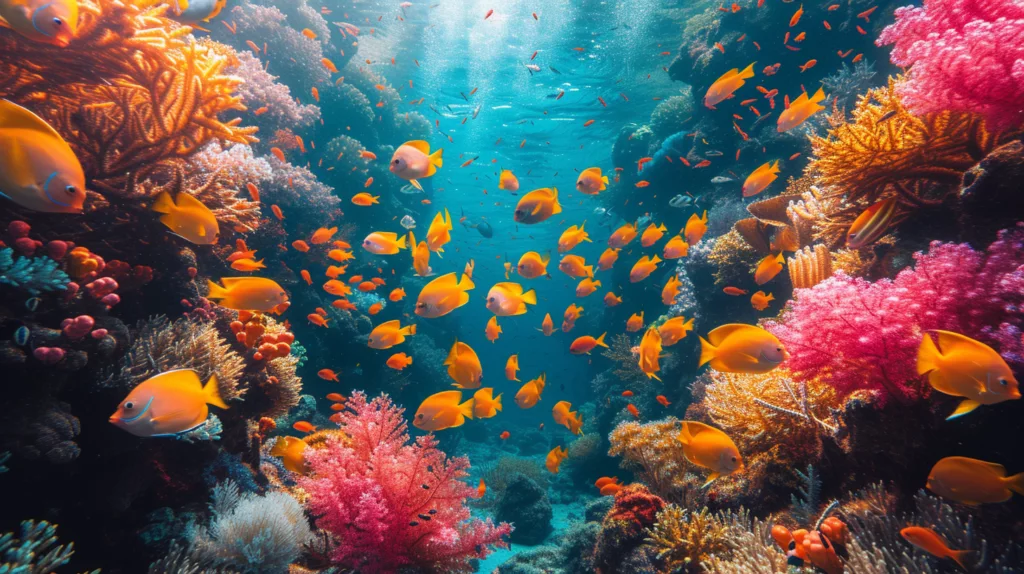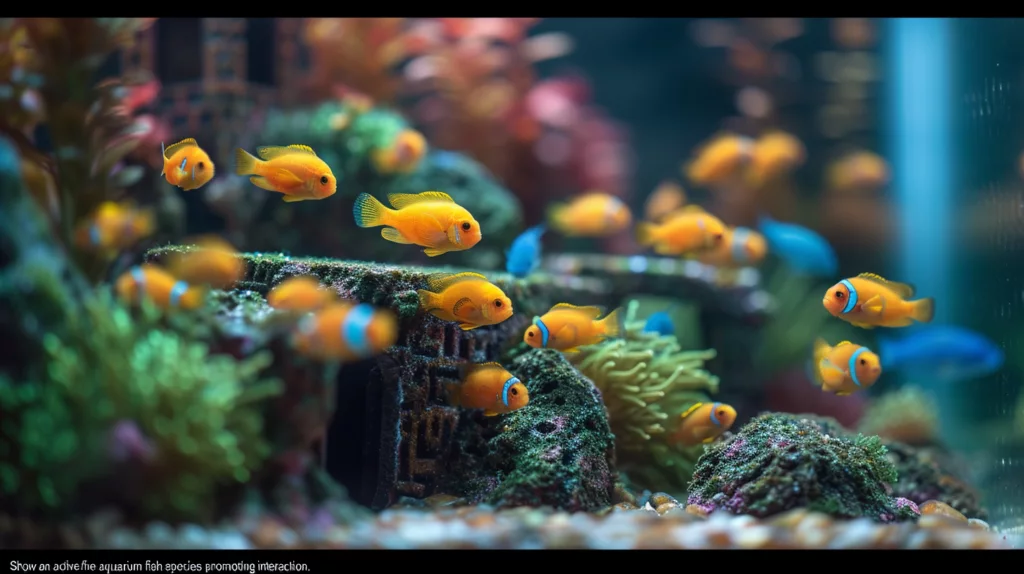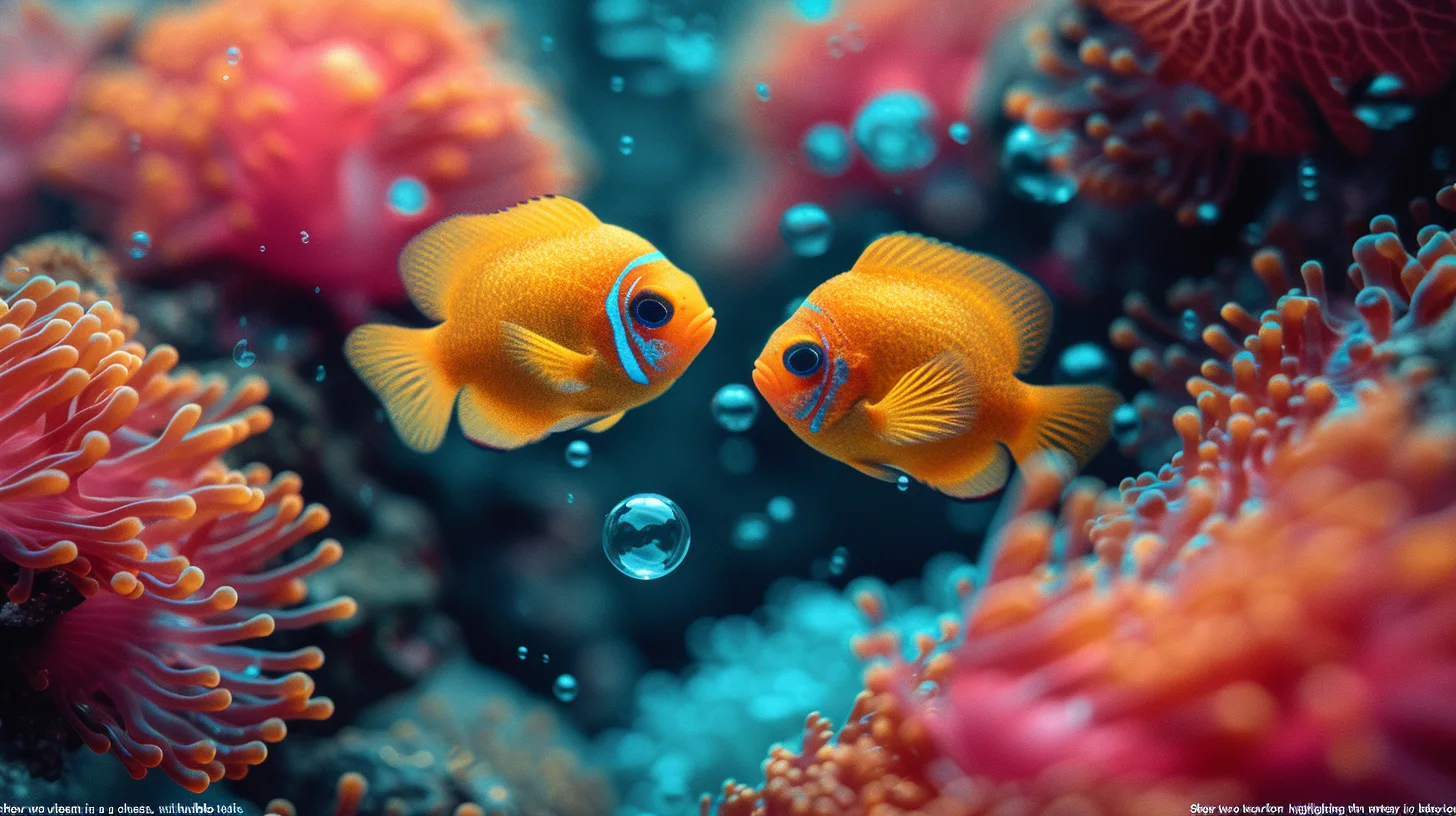Have you ever watched a pair of Goldfish darting around a fish tank and ever wondered why fish chase each other? Was it just a random fun or a form of aquatic amusement? This question, which many of us have probably pondered, is not only fascinating but also quite complex. Do fish play with each other? Well, researchers have found that fish do indeed engage in playful behavior. In fact, studies have shown that fish such as goldfish, guppies, and cichlids have been observed playing with one another, engaging in activities such as chasing, nipping, and even performing acrobatic feats. This playful behavior is not only a form of social interaction but also serves as a way for fish to exercise their bodies and sharpen their predatory skills, even when out of water.
Our exploration into whether aquarium fish, like the alpha fish, engage in playful behavior makes us rethink what we know about the social behavior of these creatures that are often underestimated.
Are these aquarium fish, such as guppies, finned friends or mere rivals in the tank, chasing each other for survival, or is there more to the interactions of these creatures we as aquarists should examine? Let’s dive in and explore the mysteries of fish chases together.
Key Takeaways
- Fish behavior and social interactions are complex and fascinating, and observing fish in their natural habitats or aquariums reveals behaviors that could be interpreted as play.
- Chasing behaviors among fish serve purposes beyond entertainment, such as establishing territory or dominance, but some behaviors suggest a degree of playfulness.
- One of the main reasons for fish interaction is factors such as territoriality, the need to chase away competitors for food, and the abundance or scarcity of food.
- Well-designed aquarium environments that allow fish to swim freely, chase each other, and provide stimulation through proper water conditions, lighting, hiding spots, and toys can enhance fish play and overall well-being.
Understanding Fish Behavior and Social Interactions

When observing fish in their natural habitats or even in aquariums, we often see one fish exhibiting behaviors that could be interpreted as play. Fish such as the betta fish chase each other around, darting and weaving through the water in what seems like a game of tag.
Many of these chases, often instigated by one fish, are related to territorial disputes among fish species, especially during the mating season. However, not all fish interactions can be chalked up to aggression or territorial claims. Some aquarium fish, particularly those shoaling species that live in large schools in the tank, seem to engage in behavior that, to the observant aquarist, resembles play.
The more we learn about fish social interactions, the more we realize there’s a lot we don’t know. As we continue our journey of understanding, we’re not looking to impose human social structures on these creatures. Instead, we’re striving to understand them on their own terms.
Playful Behaviors Among Fish Species

In our exploration of fish chase mysteries, we’ve observed species engaging in what appears to be play. They chase each other in an energetic ballet, darting in and out of plant life, circling rocks, and engaging in a high-speed game of tag. But is it all fun and games?
The chase often serves a purpose beyond entertainment, such as establishing territory or dominance, or as a prelude to mating. Courtship displays are often elaborate, involving intricate dances, color changes, and even the construction of nests. These displays, where two fish show their dominance, are essential for attracting a mate and successfully reproducing.
However, do fish play with each other? The notion of fish engaging in play has been a topic of ongoing investigation. Some researchers have noted that fish also engage in behaviors that seem to serve no other purpose than enjoyment, suggesting a degree of playfulness.
Here’s a quick glance at what we’ve discussed:
| Behavior | Purpose |
|---|---|
| Chasing | Territory, dominance, courtship |
| Courtship Display | Attract mates |
| Play | Potential enjoyment |
Unveiling fish chase mysteries and understanding playful behaviors among fish species allows us to better appreciate these fascinating creatures and understand why fish might engage in certain behaviors. The more we learn, the more we realize that these underwater citizens might not be so different from us after all.
Factors Influencing Play and Interaction Among Fish

Territoriality, especially among male fish, competition for food, and species aggression are key factors that influence play and interaction among fish. Understanding these factors, such as the behavior when they feel threatened, can provide a deeper insight into the complex world of our aquatic friends.
Territoriality:
Aquarium fish, especially dominant male fish, often establish territories to secure resources and attract female fish. This behavior can influence play and interaction among fish, as they navigate around these territorial boundaries.
Competition for Food:
Food scarcity can trigger competition among fish, also affecting their play and interaction, which an aquarist need to take note of. In situations where food is abundant, fish are more likely to engage in playful behavior, showcasing a sense of freedom and joy.
Conversely, food scarcity often leads to aggressive interactions among fish species, especially if the tank is too small.
Species Aggression:
Aggression varies among species of fish in the tank, affecting how they interact with one another and their tank mates. Some species are naturally more aggressive, affecting the dynamics of their play and interaction.
Observations and Studies on Fish Play

The environment in which pet fish live can significantly influence how well fish of the same species get along. A well-designed aquarium can facilitate social interaction and play among fish, leading to improved health and well-being. Conversely, a poorly designed environment can inhibit play and cause stress, leading to health issues, antisocial behavior or even causing peaceful fish becoming more aggressive.
| Aquarium Design | Social Interaction | Health Impact |
|---|---|---|
| Well Designed | Facilitates Play | Improves Health |
| Poorly Designed | Inhibits Play | Causes Stress |
Observations and studies on fish play have revealed that fish are social creatures that engage in complex interactions. These interactions go beyond simple survival strategies and exhibit signs of play and camaraderie, challenging the commonly held belief that fish are solitary, emotionless creatures.
Enhancing Fish Play and Interaction in Aquariums

Having understood the importance of social interactions and play in fish, we can start exploring how to enhance these aspects within aquariums. Enhancing fish play isn’t just about keeping fish entertained, it signifies a fish need for interaction for their overall health and well-being. The key to enhancing fish play lies in the environment we create for them.
- Creating an Ideal Tank Environment: The tank’s size, shape, and design significantly influence fish play. It should provide enough space for the fish to swim around freely, chase each other, and play. Dimly lit environments encourage more active play, while brightly lit ones may inhibit play.
- Introducing Compatible Fish Species: Not all fish get along. Introducing compatible species can promote interaction in aquariums. Similarly, maintaining a healthy ratio of different species can prevent bullying and enhance fish play.
- Aquascaping and Environmental Enrichment: By adding rocks, plants, and other elements that fish can interact with, we can provide them with a stimulating environment that promotes play and interaction.
Are the fish with big foreheads also involved in the phenomenon of fish chase and play behavior?
Yes, the remarkable fish species with big forehead are also involved in the phenomenon of fish chase and play behavior. Despite their unique physical characteristics, these fish exhibit similar behaviors to other species, engaging in playful pursuits and interactions with other marine life.
Can Ethical Fishing Practices Impact Fish Behavior and Interactions?
Ethically kill a fish techniques promote humane treatment of aquatic life. By minimizing stress and pain during the harvesting process, fish behavior and interactions can potentially be impacted. Ethical fishing practices prioritize sustainability and the well-being of marine species, ultimately shaping their behavior in their natural habitats.
Conclusion
So, we’ve discovered that fish do indeed play with each other. Their interactions are influenced by various factors and can be enhanced in aquarium settings. This opens up a whole new dimension to our understanding of fish behavior, such as why fish often chase each other. Additionally, this research sheds light on the complexity of fish social behavior and how it can differ from species to species. In fact, some species of fish have been observed forming intricate social structures and even engaging in cooperative hunting behaviors. Furthermore, these findings also prompt us to reconsider the intelligence and cognitive abilities of fish, challenging long-held perceptions of them as simple, instinct-driven creatures. In a similar vein, the infamous incident of the octopus escapes tank at the aquarium has sparked discussions about the problem-solving skills and adaptability of aquatic animals.
It’s not just about survival, but also social interaction and play. Let’s continue to observe and learn more about these fascinating creatures, appreciating the complexity and richness of their underwater world.
Frequently Asked Questions
Do fish play with each other?
Aquarium Fish do not play in the same way that mammals or birds do. However, they may exhibit playful behavior, such as chasing each other around the tank, which can be a form of social interaction or courtship.
Why do fish chase each other around the tank?
Fish chase each other around the tank for various reasons including mating behavior, establishing territory, showing dominance, or aggression among male fish. It can also be a sign of incompatibility or in extreme cases, lead to fish fighting or even cannibalism.
How can I stop fish from chasing each other in an aquarium?
To stop fish from chasing each other, ensure that the tank setup is suitable for the fish species, separate aggressive or incompatible fish, and provide hiding spots and visual barriers to reduce aggression and territorial behavior.
Can aggressive fish live in a community tank?
Some aggressive or territorial fish species may not be suitable for a community tank as they can chase, fight, or even exhibit cannibalistic behavior toward other fish. It’s important to research and consider the compatibility of fish species when setting up a community aquarium.
What are the signs of aggression among fish in a tank?
Signs of aggression among fish in a tank may include chasing, nipping at other fish, flaring fins, or constantly harassing a particular fish. In extreme cases, it may lead to physical fights and injuries.



